Helpful Guides on each Category
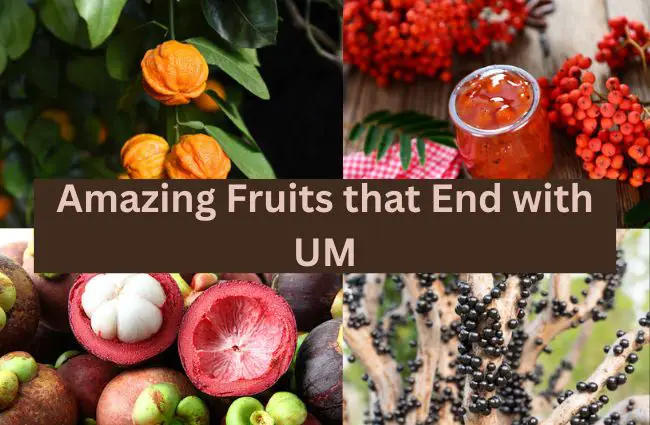
Have you ever come across fruits that end with um? It’s a small detail, but once you notice it, you can’t unsee it. From everyday fruits to rare tropical treats, there’s something oddly satisfying about spotting this quirky pattern in their names.
This list is perfect for curious minds who love words and food. Whether you’re a language nerd, a foodie, or just someone who enjoys random fun facts, this mix of science, nature, and a bit of wordplay makes things surprisingly interesting.
In this post, we’ll look at fruits that end with um — 27 of them, some with familiar names and some you’ve probably never heard of. Let’s explore a fruity twist you didn’t know you needed!
Common Fruits That End with ‘um’
1. Aurantium (Bitter Orange – Citrus aurantium)
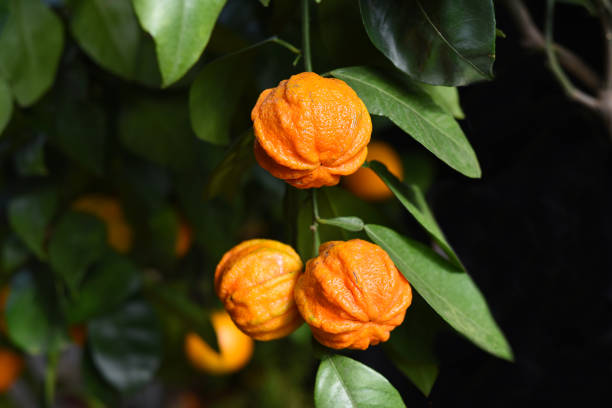
Description: A small, orange citrus fruit with a sour, slightly bitter taste. Often used in marmalade.
Where it grows: Originally from Southeast Asia, now widely grown in the Mediterranean.
Fun fact: Bitter orange oil is often used in perfumes and traditional medicines.
Tropical Fruits that end with UM
2. Mangostanum (Garcinia mangostana) – Mangosteen
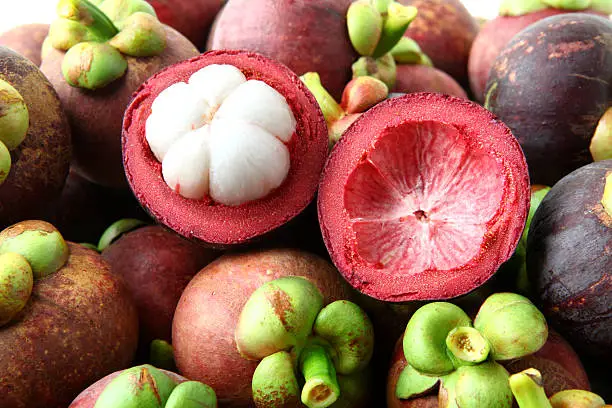
Description: A juicy, sweet-sour tropical fruit with a thick purple rind and soft white segments inside.
Where it grows: Native to Southeast Asia — especially Thailand, Indonesia, and Malaysia.
Fun fact: Often called the “Queen of Fruits” in Asia. It’s packed with antioxidants!
Rare Fruits that end with UM
3. Sorbum (Sorbus genus – Rowanberry)
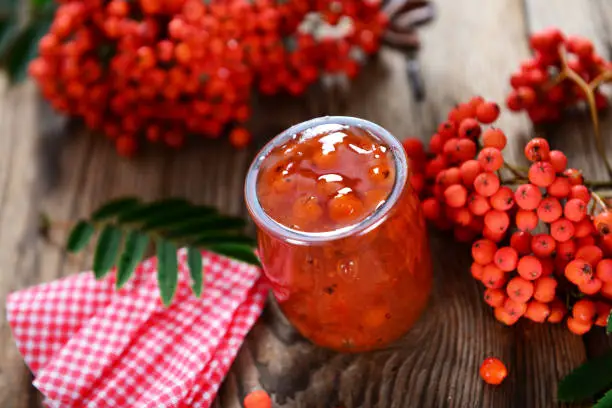
Description: Small, bright red-orange berries, usually bitter and astringent.
Where it grows: Found in cool climates across Europe, Asia, and North America.
Fun fact: Though not often eaten raw, rowanberries are made into jellies, wines, and even traditional remedies.
Culinary & Edible Grains
4. Durum (Durum Wheat Berries)

Description: Hard wheat with golden grains, commonly ground into semolina for pasta.
Where it grows: Widely grown in North America, the Mediterranean, and parts of the Middle East.
Fun fact: While not a fruit in the everyday sense, durum wheat berries are the seed of a grass — and technically, seeds are classified as fruits in botany!
Fruity but Scientific
5. Prunus cerasum – Sour Cherry
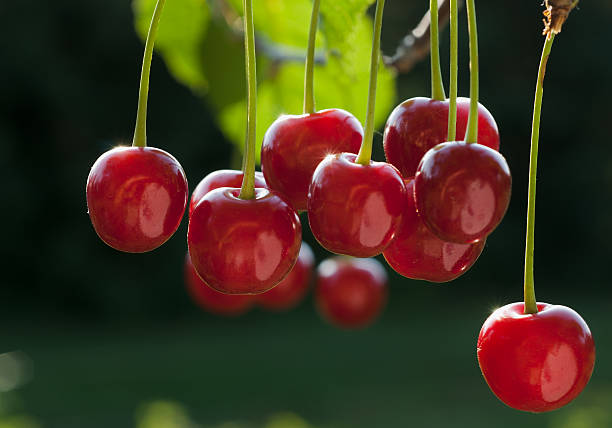
Description: Tart red cherries, smaller and sharper than sweet cherries.
Where it grows: Native to Europe and Asia, now also found in North America.
Fun fact: Often used in pies, sauces, and liqueurs like cherry brandy.
6. Myrciarium (Myrciaria genus – Jabuticaba)
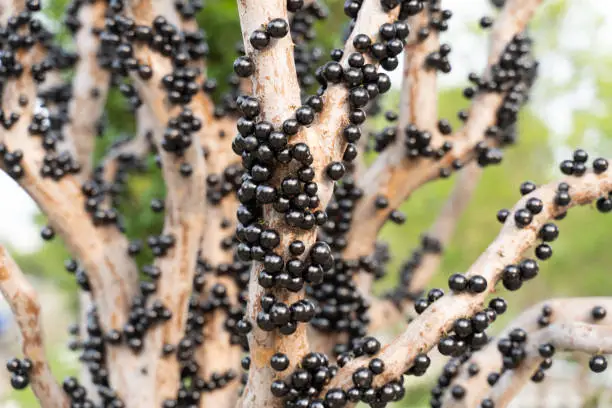
Description: Small, dark purple fruits that grow directly on the trunk of the tree — juicy with a sweet, grape-like taste.
Where it grows: Native to Brazil and other parts of South America.
Fun fact: Jabuticaba fruit ferments quickly and is often made into jams or wine.
7. Vaccinium – Blueberries, Cranberries
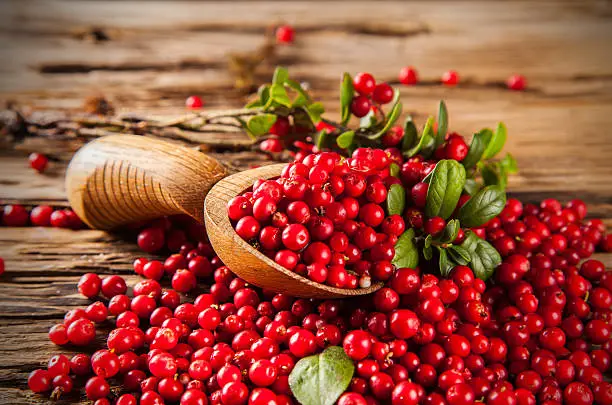
Description: Small, round berries with sweet or tart flavors — includes blueberries, cranberries, bilberries.
Where it grows: Widely found in North America and Europe.
Fun fact: Vaccinium species are rich in antioxidants and considered superfoods.
8. Oleum – Olive

Description: Olives are small, bitter fruits often cured or pressed into oil.
Where it grows: Native to the Mediterranean basin.
Fun fact: Olive oil, or oleum, has been used for thousands of years — in food, cosmetics, and even lamps in ancient times.
9. Capsicum – Peppers
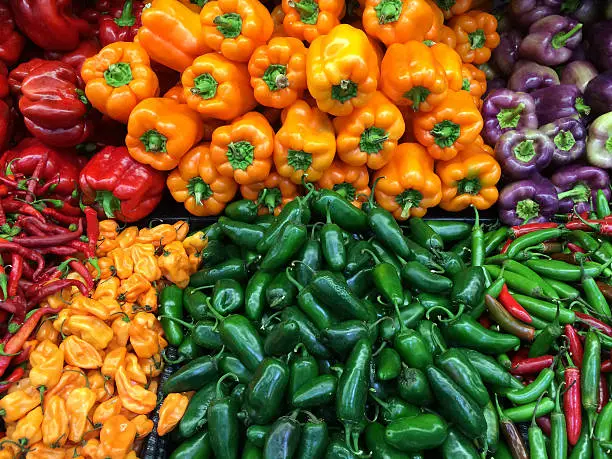
Description: This group of fruits that end with um covers a huge range of peppers, from sweet bell peppers to fiery hot chilies.
Where it grows: Native to Central and South America, now grown worldwide.
Fun fact: All peppers in the Capsicum genus are technically fruits because they contain seeds and come from a flowering plant.
10. Spondias purpureum – Jocote
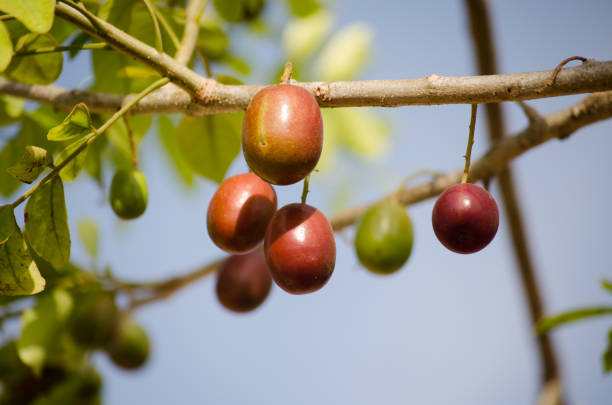
Description: A small, oval-shaped fruit with red or purple skin and juicy, sweet-sour flesh.
Where it grows: Native to Central America and the Caribbean.
Fun fact: Jocote can be eaten fresh, pickled, or made into jams. The tree is drought-resistant and commonly found in backyards in Latin America.
11. Physalis peruvanium – Cape Gooseberry
Description: A bright orange, tangy-sweet berry wrapped in a delicate, papery husk.
Where it grows: Native to South America, especially Peru and Colombia.
Fun fact: This fruit is rich in vitamin C and has natural pectin — great for jams and desserts. Its fancy little wrapper makes it a popular garnish, too!
Medicinal & Multi-Use Fruits that end with UM
12. Syzygium – Java Plum (Syzygium cumini)
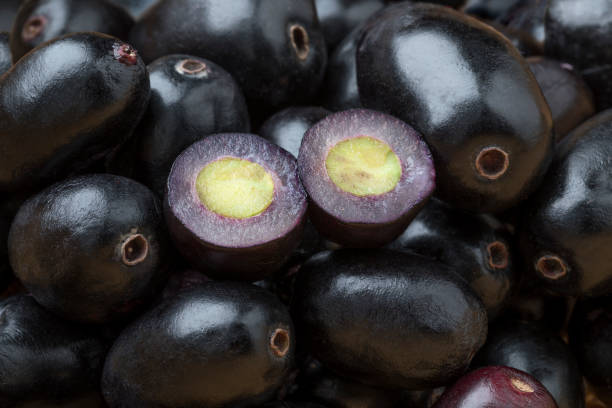
Description: A dark purple fruit with a sweet-tart taste, sometimes astringent. It’s oval-shaped and often leaves your tongue a little purple!
Where it grows: Common across India, Southeast Asia, and tropical regions of Africa.
Fun fact: Known as jamun in India, it’s used in Ayurvedic medicine to help regulate blood sugar and digestion.
13. Lycium – Goji Berries
Description: Bright orange-red berries that are chewy, mildly sweet, and slightly tangy when dried.
Where it grows: Native to China, but now grown globally in arid and semi-arid regions.
Fun fact: Called a “superfood,” goji berries are packed with antioxidants and have been used in traditional Chinese medicine for centuries.
14. Solanum – Tomato Family
Description: The Solanum genus includes several well-known fruits like tomatoes (Solanum lycopersicum), eggplants, and even some edible berries.
Where it grows: Found all over the world, especially in warm and temperate climates.
Fun fact: Not all Solanum species are edible — some are toxic, so identification is important! Tomatoes are the most famous edible member.
15. Rhus coriarium – Sumac
Description: Small reddish berries that grow in clusters; dried and ground into a deep red powder with a tangy, lemony flavor.
Where it grows: Native to the Mediterranean and Middle East.
Fun fact: Sumac is a key spice in Middle Eastern cuisine and is also known for its antioxidant and anti-inflammatory properties.
16. Crataegus monogynum – Hawthorn
Description: Small, red or orange berry-like fruits with a tart flavor.
Where it grows: Native to Europe, North Africa, and parts of Asia.
Fun fact: Hawthorn berries are widely used in herbal teas, jams, and natural heart health remedies — especially in traditional Chinese and European medicine.
17. Terminalium (Terminalia genus)
Description: A tropical tree genus that produces small fruits, some of which are edible and used in herbal treatments.
Where it grows: Common in Asia and Africa, especially India and Sri Lanka.
Fun fact: Terminalia chebula, one of its species, is a major ingredient in Ayurvedic medicine and is known as “Haritaki.”
18. Buxum (Buxus genus)
Description: While not commonly grown for fruit, certain species in the boxwood family produce small capsule-like fruits.
Where it grows: Native to Europe, Asia, and Central America.
Fun fact: Buxus is better known for its ornamental use in gardens, but it still counts in botanical terms for having fruit-like reproductive structures.
19. Arbutum (Arbutus unedo – Strawberry Tree)
Description: Produces small, round red fruits that look like strawberries but have a grainy texture and mildly sweet flavor.
Where it grows: Native to the Mediterranean region and Western Europe.
Fun fact: Despite their appearance, the fruits are very different from strawberries and are often made into jams, liqueurs, and even wine.
Other Fruits that end with UM
20. Punicum (Punica granatum) – Pomegranate
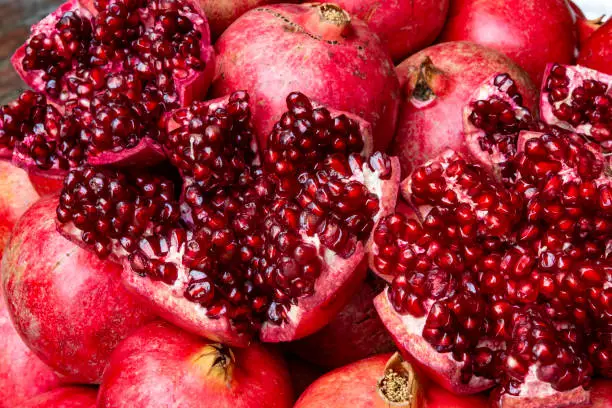
Description: Pomegranate is a round fruit filled with juicy red seeds called arils, each with a sweet-tart flavor.
Where it grows: Native to Iran and northern India; now cultivated across the Mediterranean, Middle East, and parts of the Americas.
Fun fact: The term Punicum nods to its Latin classification — it was once known as Malum punicum, or “Phoenician apple.”
21. Diospyrium – Persimmon Genus
Description: Persimmons are sweet, orange fruits with a jelly-like texture when fully ripe.
Where it grows: Mostly in East Asia and subtropical regions around the world.
Fun fact: “Diospyros” translates to “fruit of the gods” in Greek, and this broader name, Diospyrium, captures the whole family of persimmon trees.
22. Theobromum (Theobroma cacao) – Cacao
Description: Produces cacao pods that contain seeds used to make chocolate. The raw seeds are bitter but become magical when fermented and roasted.
Where it grows: Native to Central and South America; now grown in tropical climates worldwide.
Fun fact: The name Theobroma means “food of the gods.” Chocolate literally has divine roots!
23. Erythroxylum – Coca Plant
Description: Produces small red berries; best known for leaves that contain the alkaloid used to make cocaine.
Where it grows: Indigenous to South America, especially in the Andes.
Fun fact: While the leaves are controversial, the berries themselves are rarely consumed and are part of the plant’s reproductive cycle.
24. Carissium (Carissa genus – Natal Plum)
Description: Small, deep-red plum-like fruit with a tart, cranberry-like taste.
Where it grows: Native to Southern Africa.
Fun fact: The fruit is edible and often used in jams or desserts, but the plant itself contains toxic parts, so care is needed when handling it.
25. Cestrum – Ornamental Nightshade Genus
Description: Produces small berries, usually red, white, or purple, often ornamental.
Where it grows: Found in subtropical and tropical regions of the Americas.
Fun fact: Some species of Cestrum are toxic, while others have been explored for medicinal or ritual use by indigenous peoples.
26. Piperum (Piper nigrum – Black Pepper)
Description: Tiny round drupes (called peppercorns) that start green, turn red when ripe, and are dried to make black, white, or green pepper.
Where it grows: Native to South India, now cultivated in tropical regions worldwide.
Fun fact: Though we use it as a spice, black pepper is a fruit — and its Latin classification (Piperum from Piper nigrum) keeps it in the “-um” family. It’s often called the “King of Spices” for a reason!
27. Tamarindum (Tamarindus indica) – Tamarind
Description: A pod-like fruit with a sticky, tangy-sweet pulp used in cuisines around the world.
Where it grows: Native to tropical Africa, widely cultivated in South Asia and Latin America.
Fun fact: Tamarind is a key ingredient in Worcestershire sauce and many South Asian and Mexican dishes. The botanical name Tamarindus indica can be stylized as Tamarindum for consistency with other -um endings in Latin naming conventions.
From pomegranates to peppercorns, the world of fruits that end with um blends botany, language, and flavor into one quirky category. Are you a food blogger, trivia buff, or word nerd? Now you’ve got a juicy new list to chew on.
Want more lists like this? See related posts below.




